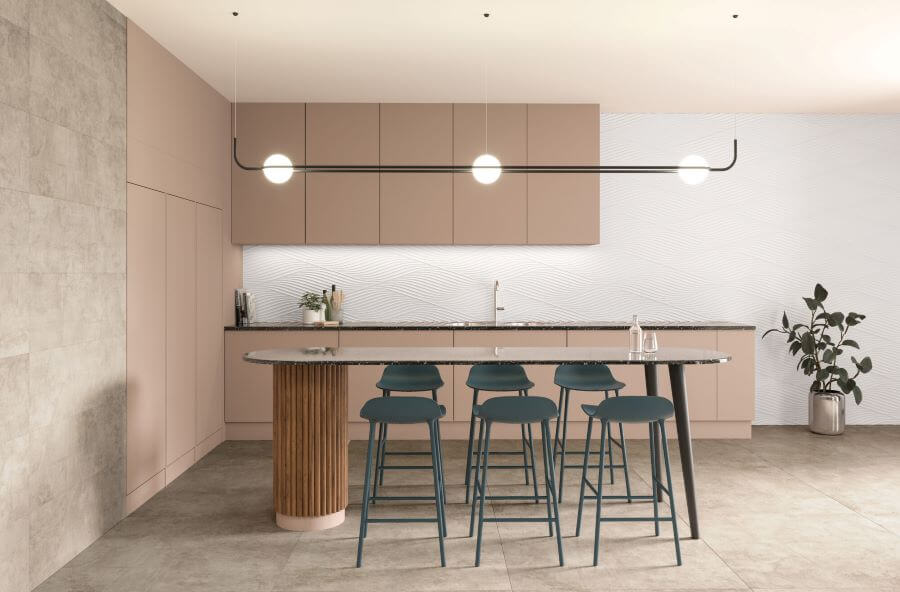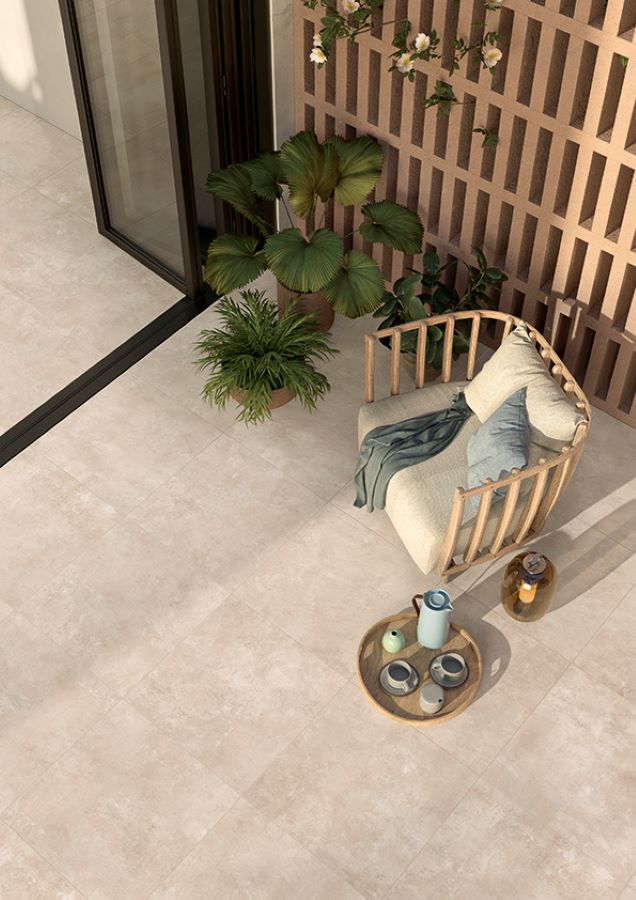
New kitchens are always exciting! Whilst much of the focus is on worksurfaces and cabinetry, flooring plays a huge role in the overall design and feel of a new kitchen.
Flooring is, after all, one of the largest surface areas and along with wall colour sets the stage on which dream kitchens are brought to life.
Your kitchen floor is probably the most hardworking floor in your home. It needs to cope with the thrills and spills of every day life. It's expected to perform on so many levels. Deft design, flawless functionality, be super hardwearing and a breeze to keep clean. And that's to name a few.
Step forward porcelain kitchen floor tiles. Arguably one of the the unsung superheros of the everyday.
Porcelain is just a brilliant material. It will take pretty much anything life throws at it. Unlike marble, natural stone and woods there is no need to seal, wax or polish it and it requires absolutely minimal love and care to keep it in tip-top condition.
Add to that high stain and scratch resistance and it's the perfect pick for spaces where spills and high traffic are an every day occurrence.
Finding those perfect porcelain kitchen floor tiles can be tricky. It is of course, a personal decision, however there are a few things that can help you find your feet. So here are 7 questions to ask yourself and help narrow that search.
There isn't a right or wrong answer however, it is worth considering you have at least 4 large surface areas to consider - floor, walls, cabinets and worksurfaces - all of which play an important part in defining an overall colour scheme.
If you already have your heart set on a cabinet colour, then that's probably a good place to start. If not, one very good reason to start with flooring is if tiling is running across a large area, for example an open plan kitchen and dining area.
You may even be considering running with the same tile outside. If so, you will want a porcelain colour and finish that can work everywhere.
You probably have a good idea of whether you prefer a contemporary or classic kitchen style. As materials go, we tend to think of metals, cements and concretes as modern and perhaps marbles and stone as more traditional. However, the finish of a porcelain tile can transform it.
So if you had your heart set on a marble floor but weren't sure it would work with your ultra modern kitchen design, then take a look at that same tile in a matt finish. In other words, keep an open mind and order samples. Play around with colour options and have fun!
Do you want your floor to be a focal point or a subtle backdrop where the cabinets or worksurfaces do the talking?
If subtle background is more your thing, then lighter white and grey tones create the subtlest of backgrounds and marry with pretty much anything.
Silver greys are brilliantly versatile. If you can get the right tone this is a colour that can add a little more depth of colour without overwhelming and is still neutral enough to pair with a whole host of other colours. Our Metro Silver is a superb canvas for kitchens.
Charcoals and anthracites can also make whatever slim groutlines there are virtually disappear for a stunningly seamless effect. They also of course encourage bright pops of colour from furnishings to stand out brilliantly.
If it's warmer vibes you're seeking then beige is back and set to be all the rage in 2021. You can't go far wrong with the soothing tones of oatmeal, jute and taupe - they are beautiful alternatives to whites and greys and just the ticket to warm up spaces.
And let's not forget woods. From warmer honey tones to cooler grey shades, woods just work - with pretty much anything.
With our homes evolving at pace to support home working and more, we are all looking for ways to utilise space wisely. Zoning is about keeping the big open plan feel whilst creating distinct areas for study, family or work. A shift in flooring signals a transition from one space to another, highlighting boundaries. It's a great way to define an area and can be done on a large or small scale.
Tile sizes have increased significantly. Traditional ranges including 600 x 300 and 600 x 600mm sizes have expanded to house much larger sizes. 800 x 800, 900 x 900 and 1200 x 600 or 1200 x 1200mm are becoming the go-to sizes particularly for those seeking 'more tile, less grout'.
Even in smaller kitchens, larger porcelain kitchen floor tiles can work brilliantly. It is worth thinking about wastage - it is generally higher in smaller spaces, however, if your area doesn't have lots of angles then you can map out how many tiles you might need and manage how many extra tiles you require.
Because our porcelains all feature rectified or straight edges, the clean lines allow for minimal grout between tiles giving the appearance of virtually seamless floors making a truly stunning canvas.
As well as size, shape is also a key question. Do you go square or rectangular. Again, this really is a matter of personal taste. They both work equally well.
There are more questions to consider with rectangular regards laying tiles including which way you run the tiles, and whether you stack them or brick bond. It's also important to note that for larger format tiles if you do brick bond, the overlap should not exceed 33% in a staggered brick-joint pattern. This helps avoid lippage.
Kitchen porcelain tiles come in so many finishes it can all be a bit mind-boggling! Honed, polished, matt, natural, antislip - how do you know where to start. Finish transforms a tile and it is an important consideration in kitchens and utility areas in particular where spills are likely to be an every day occurence.
Nothing beats a polished marble porcelain if it's sumptuousness you are seeking. They ooze elegance. But some polished porcelains can dull over time particularly in higher traffic areas. They are also be very slippery when wet.
If that is a concern, then opting for a tile with more of a matt finish may be best for you. It really does depend on individual circumstances and choice. There are some really clever innovations in surface texture, like our Antislip Soft finish. Antislip properties have been combined with a soft finish for a surface that retains a lovely tactile finish and is easy to clean.
So there you have it. 7 questions to start you on your journey to new kitchen flooring. Or you could just call us, tell us a little more about your project and we can help identify those perfect tiles!
With our fresh online approach you can do all your tile shopping from the comfort of your own home. So skip the queues, choose from exquisite tiles and enjoy great prices.
The TilePortfolio specialise in Italian and Spanish Porcelain and Ceramic tiles, in particular large format Porcelains and Porcelain tiles for inside and outside. Our carefully curated, stunning tile portfolios are beautifully presented online and supported by our fuss-free ‘go-the -extra-tile’ service and video design consultancy. Visit our website for unmissable interiors inspiration. The TilePortfolio team are always available to chat, we’d be delighted to help with your project so please do get in touch. www.thetileportfolio.co.uk.
Please note: We strongly recommend using a professional tiler for your project. Always check with your tiler regards suitability of your chosen tiles for your project.
GET IN TOUCH
Call, Text, WhatsApp: 07395 011861
Landline: 01536 856 108
Email: hello@thetileportfolio.co.uk
Visit Us: The TilePortfolio Showroom, Glebe Farm,
A14, Junction 7, Kettering, NN16 8XF
Company No. 13033923
VAT No. 376573947
Reg. Office: Headlands House 1 Kings Court
Kettering, Northants, NN15 6WJ
2024 © Copyright The TilePortfolio Limited
